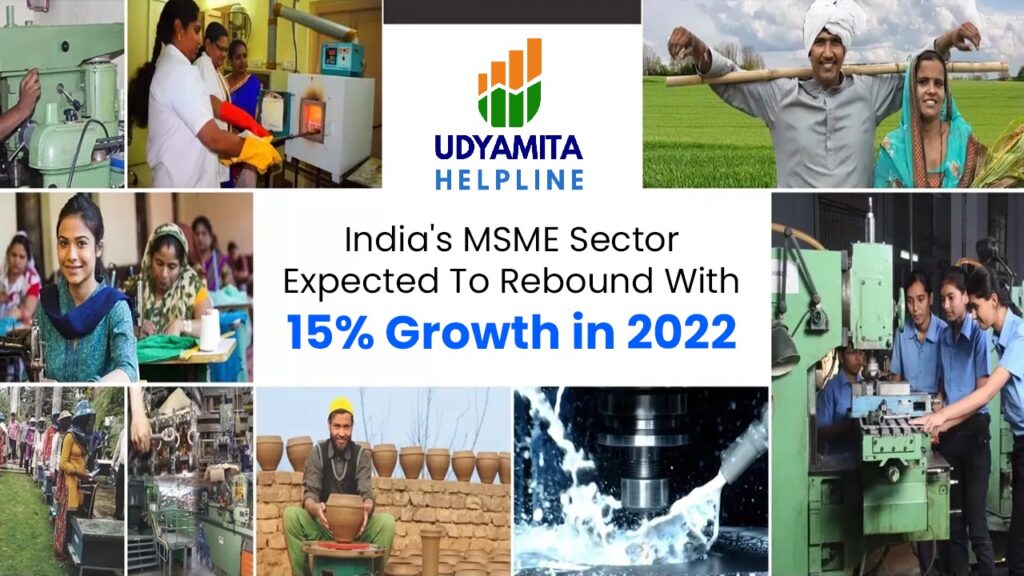The last few months have recovered in several industries like construction, commodities, export, and consumption services. Covid-19 left the economy of every country devastated. Though, the upliftment of Covid-19 norms has relaxed business owners to a great extent. According to reports, the micro, small, and medium enterprise industry is expected to experience a growth in revenue of almost 15-17%.
The annual NPAs of the MSME sector increased to some extent, where the growth was noted to be around 8.6% in FY19 and 12.5% in FY20. This year it is most likely to stay around the same level.
Doing Business Is Now Easy for MSME
The MSME sector is expected to rebound in the FY22 on-demand recovery following a pickup in economic activities. The reason for this growth in this financial year is a more significant uptick in the overall economy of India. The reason primarily is a shift and pent-up demand in the sentiments of the general business industry.
Also, the country is currently under inflation, where the price of certain commodities has increased. Furthermore, the third pandemic wave had a negligible impact on India’s overall demand for products and services.
As far as the MSME credit is concerned, many researchers conducted a study. This study was named, Back to the Grind. This study estimated that the sector could expect a 7-9% growth in the current financial year. This growth results from a gradual enhancement in demand for products and a rapid increase in the economy.
The lending space is also expected to experience growth, and the book growth of this sector is expected to be almost 8-10% higher than the growth of non-banking financial companies. The NBFCs are expected to experience an increase of nearly 5-7%.
The banking sector introduced several on-ground schemes, and growth is expected to result from this introduction. One of the best examples of this scheme is the Emergency Credit Line Guarantee Scheme and a few other disbursements that were being noticed. This minimal growth brings the confidence in the lending sector to get back in form and bring exposure.
The lending sector is expected to take a jump, but there are concerns related to the asset’s quality, which has increased further this year. This is major because the second wave of the pandemic had impacted collection to a great extent. AS EXPECTED, the NPA level will remain the same or at the same level.
Additionally, the MSME sector expects no significant impact, even if a fourth wave occurs. No denying the fact that it was the pandemic that resulted in accelerating the digital route to increase credits among MSMEs.
Cris surveyed around 500 MSME businesses operating in India, citing a report in which it was stated that the loan book of digital lending platforms experienced an unexceptional swelling. It was around only 11 percent before the wake of the pandemic. In contrast, after two years of the pandemic in FY22, the rate amounted to 55% for the companies operating in the micro-segment.
Not only the micro-segment experience growth, but the small business segment also noticed steady growth. In this segment, the development went up to 5 times straight away. From 9% it went to 45%.
MSMEs are taking the digital route to secure their credits, which has helped them draw the formal position for recognition after the pandemic. All of this is the result of the increased internet penetration in today’s world and the growing use of smartphones.
Furthermore, digital lenders are also plugging asymmetric information gaps, which has helped MSMEs grow towards digital channels. Though, finance availability, lack of formal registration, the adoption of technology, and a competitive market environment are still some of the main challenges that MSMEs are facing these days.
The Bottom Line
The government is helping MSMEs grow in their industry and offering several beneficial schemes to ensure their existence. The ministry of MSME is running numerous schemes to provide credit and financial assistance to such businesses. This assistance is usually targeted towards the development of infrastructure, skill development of their employees, quality and technological up-gradation, and several other similar services across the country.


